Picture this: a Māori warrior stands before you, his face adorned with intricate spirals and flowing lines that tell the story of his ancestors, his battles, and his place in the world. Each curve carved into his skin speaks of mana (spiritual power), each pattern a chapter in his life’s journey.
This is the profound world of Maori tattoos, where ink becomes identity and skin transforms into a sacred canvas of cultural heritage.
Rooted in the ancient art of tā moko, Māori tattoos are far more than body decoration. They are living documents of genealogy. spiritual protectors carved into skin. Powerful expressions of indigenous identity that have survived centuries of change.
In this comprehensive guide, we’ll journey through the rich history of traditional maori tattoos, explore their deep meanings, and discover how modern people can approach this sacred art form with proper respect and understanding.
What are Tā Moko and Why They Matter: The Sacred Origins
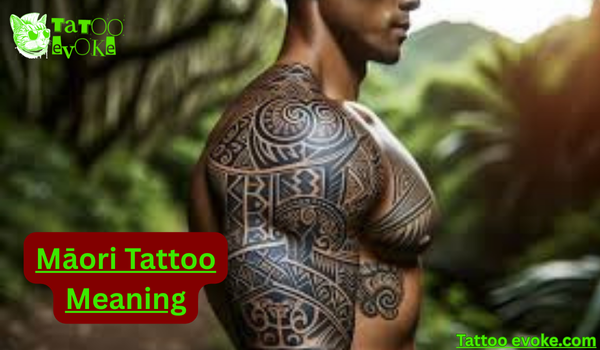
The Legend of Mataora & the Birth of Tā Moko
The story of Māori tattoos begins in the mists of Polynesian legend and the spiritual realm of the underworld. According to traditional Māori mythology, the art of tā moko originated with Mataora, whose name translates to “the living face.”
When Mataora struck his beloved wife Niwareka, she fled to her parents who dwelled in the underworld. Desperate to win her back, Mataora pursued her into this realm of spirits.
There, he encountered Uetonga, Niwareka’s father and a master tattooist expert in the art of tattooing. Uetonga looked upon Mataora’s plain, un-tattooed face with disdain.
In the underworld, tattoos were not merely decoration. They were signs of rank, social status, power, and prestige.
Mataora was forcibly restrained while Uetonga carved intricate patterns into his face using traditional uhi chisels. The pain was excruciating, but when it was complete, Mataora’s face had become a masterpiece—truly a “living face” that told his story.
He returned to the surface world with Niwareka, bringing the sacred art of tā moko to the Māori people. This legend captures the essence of what makes maori tattoos meaning so profound.
How Tā Moko Differs from Modern Tattoos
Unlike modern tattoos that are applied to the skin’s surface, traditional tā moko was carved into the flesh using uhi chisels made from albatross bone. This left grooves that could be felt as well as seen.
The word “tattoo” itself comes from the native Tahitian word “tautau,” first recorded by Captain James Cook during his 1769 voyage to the South Pacific.
The Sacred Functions of Traditional Moko
In pre-European Māori culture, many high-ranking persons received moko as markers of mana and high social status.
Functions of Tā Moko:
-
Identification: Each design was unique, like a personal ID.
-
Spiritual protection: Connected the wearer to ancestors.
-
Accomplishments: Displayed personal and family achievements.
-
Social rank: Indicated tribal affiliations and status.
The art form was brought to New Zealand by people of Eastern Polynesia around 1250 AD. Over time, it evolved into something distinctly Māori as communities established their iwi and hapu (tribes and sub-tribes).
Traditional Tools and Techniques: Mastering the Ancient Craft
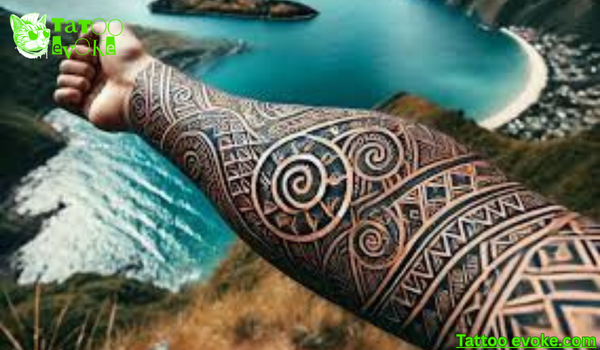
The Sacred Uhi and Spiritual Craftsmen
The creation of traditional maori tattoos was a sacred ritual requiring specialized tools, natural pigments, and extraordinary skill. At the heart of this process was the uhi, a chisel-like instrument that served as both practical tool and sacred object.
The tohunga-tā-moko (tattoo specialists) were considered tapu (inviolable and sacred). They used a range of uhi chisels crafted from albatross bone for their light weight and hard, high-density bone structure.
The finest craftsmen could create tools so sharp they could carve the most intricate patterns with precision.
Revolutionary Māori Tattooing Methods
The Western and Eastern Pacific method of tattooing used broad notched combs of varying widths called uhi. These were dipped in dark pigment and struck into the skin with small mallets known as tā.
However, as the art and practice of tā moko developed in isolation in Aotearoa New Zealand, Māori pioneered something revolutionary.
They developed smaller, narrower uhi without teeth that cut grooves through the skin by gouging and channeling. This process was followed by the application of small, toothed uhi combs that applied the pigment.
The result was more like wood carving than traditional tattooing.
Sacred Pigments and Storage
The pigments used held deep cultural significance:
- Black pigments were created from burnt wood (ngarehu burnt timbers) for the blacker face colour
- Lighter pigments were derived from caterpillars infected with certain types of fungus
- Alternative pigments came from burnt kauri gum mixed with animal fat
These precious inks were stored in ornate containers called oko. These became family heirlooms handed on to successive generations and often buried when not in use.
The very containers holding the ink carried spiritual power.
Pain, Ritual & Spiritual Meaning
The tattooing session itself was surrounded by strict protocols reflecting the sacred nature of Maori tattoo:
- Those receiving tattoos and everyone involved in the process could not eat with their hands
- They could not talk to anyone aside from the other people being tattooed
- The person receiving tattoos was expected to endure the pain without crying out, as this was considered a sign of weakness
A kōrere (feeding funnel) was used to feed men whose mouths had become swollen from receiving tā moko. This prevented foodstuffs from contaminating the swollen skin.
Symbolism in Māori Tattoo Patterns
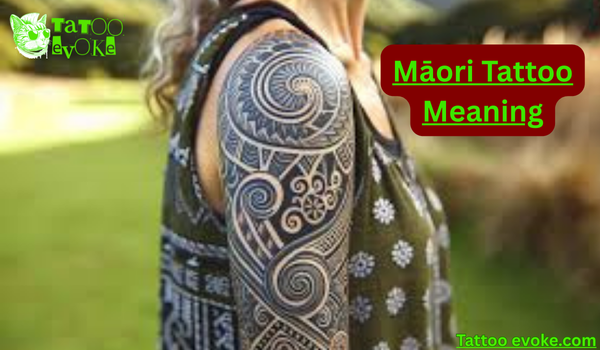
The Foundation: Manawa Lines and Koru Spirals
Every traditional maori tattoo tells a unique story through a complex visual language. This combines universal symbols with highly personal elements.
Understanding these maori tattoos designs requires appreciating both the shared cultural vocabulary and the individual narrative each design represents.
At the heart of most maori tattoos meaning lies the manawa. These are flowing lines that appear like skin rivers through the negative space of the design.
Manawa is the Maori word for Heart and represents:
- Your Life
- Life Journey
- Time spent on Earth
These central lines represent the individual’s spiritual path and life’s journey through the natural world. They flow like water, connecting all elements of the design into a cohesive story.
Sprouting from the Manawa Lines are main Korus—spiral patterns based off the tiny new growth shoots of the New Zealand Fern plant. These represent New Life and New Beginnings.
Each koru coming off the Manawa Lines represents people and people groups significant to the wearer:
- Mothers, Fathers, Grandparents
- Children, siblings, Loved ones
- Friends and family
This creates a visual family tree honoring the wearer’s connections and relationships. The beauty lies in how personal the arrangement becomes for each individual.
Sacred Infill Patterns: Reading the Black Areas
The solid black areas within maori tattoo designs are filled with specific patterns. Each carries profound meaning that adds layers of symbolism to the overall design:
Pakati
- Resembles a dog skin cloak
- Representative of warriors, battles, courage, and strength
- Particularly favored by those who had proven themselves in combat
- Angular, tooth-like shapes suggest both protection and ferocity
Unaunahi
- Depicts fish scales that represent abundance and health
- Often appeared on those whose prosperity came from maritime activities
- Overlapping scales suggest plenty and continuous blessing
Hikuaua
- Representative of Taranaki (a region of New Zealand) as well as prosperity
- Resembles a mackerel tail
- Connects the wearer to specific geographical and cultural territories
- Speaks of belonging to place as well as wealth
Ahu ahu mataroa
- Shows talent and achievement in athleticism or sport
- Can represent new challenges overcome
- Pattern suggests movement, victory, and the conquest of obstacles
Taratarekae
- Derives from whale teeth
- Symbolizes strength and sensitivity in balance
- Reflects the Māori understanding that true power combines force with wisdom
Spiritual Guardians in Maori Tattoos
Two of the most powerful symbols in traditional maori tattoos are spiritual guardians that offer protection and guidance:
Manaia
- Known as a spiritual guardian and carrier of supernatural powers
- Traditionally depicted as a bird-like figure with the head of a bird, body of a man, and tail of a fish
- Acts as a provider and protector over the sky, earth, and sea
- Serves as a messenger between the spirit realm and physical world
- Many believe it watches over the wearer like a guardian angel
Hei tiki
- Commonly known as a good luck charm
- Also considered a symbol of fertility
- The Maori believe the tiki represents the unborn human embryo
- Connects the wearer to ancestral wisdom and the continuation of life
- Often appears in the most sacred areas of tattoos
Facial Moko: The Eight Sacred Sections
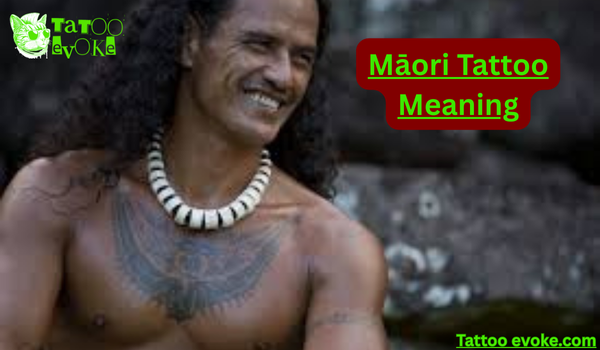
Understanding the Visual Language of the Face
Traditional maori face tattoos followed a sophisticated system where different facial areas conveyed specific information about the wearer. This created a visual language that could be read by those who understood the symbols.
The male facial moko was generally divided into eight sections of the face, each with specific meaning:
The Eight Sections Explained
Ngakaipikirau (centre of the forehead)
- Designated a person’s general rank within their community
- First thing people would notice
- Immediately indicated social standing
Ngunga (area under the brows)
- Designated his position or specific role
- Might indicate whether someone was a warrior, priest, or craftsman
Uirere (area around the eyes and nose)
- Designated his hapu or sub-tribe rank
- Connected the individual to their specific family group and territorial affiliations
Uma (area around the temples)
- Served to detail marital status, including the number of marriages he had
- In a society where alliances were crucial, this information was vital for social interaction
Raurau (area under the nose)
- Displayed the man’s signature—a unique pattern once memorised by tribal chiefs
- Used when buying property, signing deeds, and officiating orders
- Functioned as a personal seal
Taiohou (cheek area)
- Showed the nature of the person’s work or profession
- Immediately communicated how the individual contributed to their community
Wairua (chin area)
- Showed the person’s mana or prestige within the community
- Reflected earned respect and spiritual power
Taitoto (jaw area)
- Designated a person’s birth status and hereditary position
- Indicated what the person was born into versus what they had achieved
Ancestral Sides of the Face
Significantly, a person’s ancestry was indicated on each side of the face:
- Left side generally represented the father’s side
- Right side honored the mother’s lineage
Noble or note-worthy descent was a primary requirement before a moko was undertaken.
Gender Differences in Māori Tattoos

Maori Tattoos for Men
Maori tattoos for men typically included several key areas:
Moko kanohi
- Full facial tattoos covering the entire face
- Reserved for the highest-ranking warriors and leaders
- Complete facial coverage marked someone of exceptional status and achievement
Raperape
- Buttock tattoos featuring the distinctive rape pattern
- Two sets of concentric spirals that come together in the centre
- Both decorative and meaningful, often representing the cyclical nature of life and spiritual energy
Puhoro
- Thigh tattoos that echoed the swift currents and eddies that rip through fast-moving waters
- Represented speed and strength, qualities essential for warriors
- Flowing patterns suggested both physical prowess and spiritual power
Maori Tattoos for Women and Ladies
Maori tattoos for women and maori tattoos for ladies followed different conventions that honored feminine roles and spirituality:
Moko kauae
- Chin tattoos (also called pūkauae)
- Became the most common form of women’s tā moko
- Elegant designs enhanced facial beauty while indicating status and spiritual power
Ngutu
- Lip tattoos that enhanced beauty and showed status
- Delicate markings required great skill to execute
- Considered highly attractive
Additional Placements for Women Maori tattoos female practitioners might also receive tattoos on:
- Foreheads, buttocks, thighs
- Necks, backs, arms, and calves (though less common)
- Placement and patterns reflected the woman’s role in her family and community
The different treatment of men’s and women’s tattoos reflected broader cultural patterns about gender roles and spiritual power in traditional Māori society.
The Social & Sacred Role of Moko in Māori Culture
Status, Identity, and Spiritual Power
In traditional Māori society, tā moko functioned as far more than personal adornment. These sacred markings served as visual representations of an individual’s entire social identity, spiritual status, and connection to the community.
Only people of rank and status were allowed to have, and could afford to have, tattoos.
The extensive time required, specialized tohunga tā moko, and expensive pigments made tā moko a privilege of the elite. This wasn’t simply about wealth—it was about earning the right through achievement and birth.
Social Restrictions and Significance
- A person who did not have any high-ranking social status, such as a slave, could not have a face tattoo
- Those who had the means to get a tattoo but did not were seen as people of lower social status
- The absence of moko could be as significant as its presence
Rites of Passage and Attraction
Receiving moko constituted an important milestone between childhood and adulthood. The process was accompanied by many rites and rituals that marked the transition into full community membership.
Apart from signalling status and rank, another reason for the practice in traditional times was to make a person more attractive to the opposite sex.
Living Documents of Identity
The sacred nature of the process meant that the designs themselves were believed to contain mana. This spiritual power would protect and empower the wearer throughout their life journey.
The tattoos were understood to be alive, growing with the person and continuing to influence their spiritual development.
The maori facial tattoo was not only seen as a sign of rank but was also used as a kind of identification card. For men, their face tattoo showed their accomplishments, status, position, ancestry, and marital status.
It was considered highly insulting to be unable to recognise a person’s power and position by his moko.
This system created a visual language that allowed immediate social recognition and appropriate interaction. In a society without written records, these body markings served as permanent documents of identity and achievement.
Yet the devastation of colonization would soon challenge this ancient system, forcing dramatic changes that would nearly destroy this sacred art forever.
Decline Under Colonisation and the Dark Trade

The Devastating Impact of European Contact
The arrival of European colonizers brought dramatic changes to Māori culture. Tā moko was among the traditions that suffered most severely, facing challenges that threatened its very existence.
The Mokomokai Trade: A Sacred Violation
The Pākehā practice of collecting and trading mokomokai (tattooed heads) changed the dynamic of tā moko in the early colonial period.
This dark chapter involved European collectors creating a market for preserved tattooed heads. The demand was so strong that it led some Maori people to actually raid neighbouring tribes for the sole purpose of obtaining tattooed heads, which could be traded for guns and ammunition.
Major General Horatio Robley: The Collector
Major General Horatio Robley was one of the most noted collectors of tattooed heads:
- He acquired 35 tattooed heads in his lifetime
- Treated these sacred remains as curiosities
- Today, 30 out of the 35 heads in his collection can be found in the Natural History Museum of New York
- Traders then sold the heads to museums and private collectors in areas of Europe
This commercialization of sacred cultural items represented a profound violation of Māori spiritual beliefs. It accelerated the decline of traditional tattooing practices as communities struggled to keeping culture safe.
The End of an Era
Tā moko on men stopped around the 1860s in line with changing fashion and acceptance by Pākehā. As Māori men sought integration into colonial society, many abandoned traditional practices in favor of European customs.
Women continued receiving moko through the early 20th century, preserving some continuity of tradition.
Historian Michael King in the early 1970s interviewed over 70 elderly women who would have been given the moko before the 1907 Tohunga Suppression Act.
This legislation further damaged the tradition by outlawing many traditional Māori spiritual practices, including aspects of tā moko.
Modern Revival: The Koru Grows Again
But cultures, like the spiral koru, have remarkable power to regenerate and grow anew.
The 1990s Renaissance
Since 1990 there has been a resurgence in the practice of tā moko for both men and women. This revival came as a sign of cultural identity and a reflection of the general revival of the language and culture.
Since the 1990s, Maori tattooing has experienced resurgence, often being done with the use of modern machines.
New Challenges and Opportunities
Since tribal-patterns of tattoo grew in popularity in the late 1990s and early 2000s, more and more non-Maori began copying designs and incorporating them into their own art.
This created new challenges and opportunities for cultural sharing and preservation.
Cultural Appropriation vs Appreciation: Kirituhi vs Tā Moko
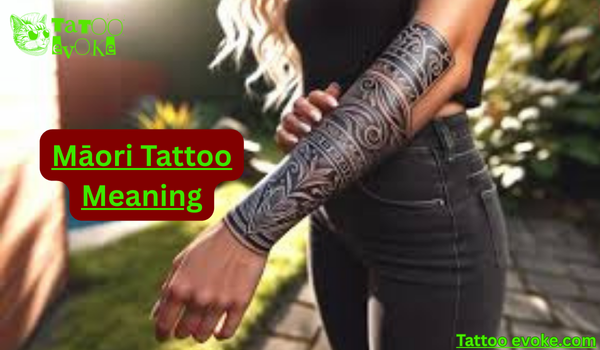
The Celebrity Controversy
The revival of interest in maori tribal tattoos has raised important questions about cultural appropriation. The proper approach for non-Māori people interested in Māori designs became a crucial conversation for preserving cultural integrity while allowing respectful sharing.
High-profile uses of Māori designs by celebrities like Robbie Williams and Ben Harper sparked significant debate. A controversial 2007 Jean Paul Gaultier fashion show featuring Māori designs further highlighted concerns about the boundaries of cultural sharing.
The Kirituhi Solution
To reconcile the demand for Māori designs in a culturally sensitive way, the Te Uhi a Mataora group promotes the use of the term kirituhi.
This concept has gained wide acceptance as a respectful solution. Kirituhi translates literally to mean “skin writing” (kiri meaning skin and tuhi meaning art).
Understanding the Crucial Distinction
The distinction between Ta Moko, Kirituhi, and Tattoos is significant:
Ta moko
- An important cultural practice that visually signifies someone’s whakapapa (genealogy), identity, and status within Māori society
- Requires Maori recognition and the conferral of cultural status
- Something that cannot be authentically given outside of that cultural context
Kirituhi
- A Maori-inspired design which does not include someone’s heritage
- Culturally appropriate for pakeha (someone of European descent)
- Allows people to appreciate and honor Māori artistic traditions while respecting sacred boundaries
This framework provides a path forward that honors both cultural preservation and respectful sharing. It acknowledges that appreciation and appropriation are different things, requiring different approaches.
How Non-Māori Can Respectfully Approach Māori Designs
Essential Guidelines for Cultural Respect
For those interested in maori tattoos for non maori, the key lies in education, respect, and proper consultation. Understanding what are maori tattoos called and their cultural significance is essential before making any decisions.
Step-by-Step Respectful Approach
Consult with Māori artists and cultural experts who specialise in the cultural significance and artistry of Maori tattoos before choosing any design. Experienced practitioners can help you understand which elements are appropriate for kirituhi and which should be reserved for traditional maori tattoos.
Avoid facial designs entirely unless you are Māori. Traditional facial moko carry such specific cultural and family meanings that they should never be replicated by non-Māori individuals seeking maori face tattoos. This includes maori chin tattoos and other facial placements.
Learn the meanings behind any symbols you’re considering. Understanding what do maori tattoos mean helps ensure you’re not inadvertently claiming cultural status or experiences that aren’t yours. Each symbol carries weight and history that should be respected.
Choose artists with cultural knowledge who understand the difference between respectful appreciation and cultural appropriation when creating new zealand maori tattoos. Not all tattoo artists have the cultural background needed for this work.
Consider placement carefully for maori arm tattoos, maori hand tattoos, or other body placements. Some locations carry more cultural significance than others, and your artist should guide you toward appropriate choices.
The Ultimate Goal
The goal is creating meaningful art that honors rather than exploits this sacred tradition. This requires patience, education, and genuine respect for Māori culture and values.
Getting a Māori-Inspired Tattoo Today

The Modern Consultation Process
The process of receiving contemporary maori tattoos designs typically begins with extensive consultation. Reputable studios specializing in this work will discuss your personal story, the meanings you wish to incorporate, and how to represent these respectfully through kirituhi designs.
Modern practitioners often combine traditional and contemporary methods. While most use modern tattoo machines for efficiency and safety, some artists have revived the use of traditional uhi for those seeking a more authentic experience.
The Four-Step Design Process
1. Initial consultation
- Discuss meanings, cultural appropriateness, and design concepts
- Works for both small maori tattoos or larger pieces
- Ensures your tattoo will be both personally meaningful and culturally respectful
2. Sketch development
- Shows the overall design and explains symbolic elements
- Your artist should explain why certain elements work together
- Clarifies what story your tattoo will tell
3. Freehand refinement
- Done directly on the skin using Tattoo Marker Pens
- Ensures representations are built within the piece in Traditional Maori Symbolism
- Ensures the design flows naturally with your body’s contours
4. Tattooing session
- Done with proper aftercare instructions
- The actual tattooing should be done with the same care and respect as the design process
Aftercare and Healing
Proper aftercare is essential for any tā moko to heal properly and retain its vibrancy.
Modern kirituhi tattoos heal like standard tattoos, typically taking 2-4 weeks for surface healing.
Detailed aftercare instructions ensure your tattoo stays beautiful for years to come, maintaining the integrity of the cultural symbols and artistic elements.
Exploring Before Committing
For those considering temporary maori tattoos as a way to explore designs before committing to permanent ink, this can be a respectful way to understand how the patterns flow with your body.
This allows you to learn about their cultural significance while deciding on your final design.
Contemporary Figures & Living Examples
Modern Leaders Embracing Traditional Moko
The modern revival of tā moko has produced several high-profile examples demonstrating the continued relevance of this ancient art form. These contemporary leaders show how traditional practices can thrive in modern contexts.
Nanaia Mahuta: Breaking Diplomatic Barriers
In 2016, New Zealand politician Nanaia Mahuta received her moko kauae. She made international headlines when she became Foreign Minister in 2020—the first person with traditional facial markings to hold such a senior diplomatic position.
When a writer said her facial tattoo was inappropriate for a diplomat, there was much support for Mahuta. She responded that there is “emerging awareness about the revitalisation of Māori culture and that facial moko is a positive aspect of that.”
Her courage opened doors for others to embrace their cultural identity.
Oriini Kaipara: Media Representation
Similarly, on 25 December 2021, Māori journalist Oriini Kaipara, who has a moko kauae, became the first person with traditional facial markings to host a prime-time news programme on national television in New Zealand.
Her presence sparked important conversations about representation and the place of indigenous culture in mainstream media.
These contemporary figures demonstrate how traditional maori people tattoos continue to evolve while maintaining their core spiritual and cultural significance in modern New Zealand society. They show that ancient wisdom and modern life can coexist beautifully.
Types of Maori Tattoos: A Complete Guide
Stand-Alone Maori Designs
To help readers navigate the rich world of maori culture tattoos, here’s a comprehensive guide to the main types of maori tattoos and their traditional applications:
Koru (spiral)
- Depicts new beginnings, growth, and harmony
- Taken from the symbolism of an unfurled fern leaf
- New Zealand has some of the most beautiful ferns in the world
- The spiral represents life’s journey and continuous growth
Hei matau (fish hook)
- Symbolises prosperity (fish were so plentiful to the Maori that simple ownership of a fish hook meant prosperity)
- Also represents strength, determination, and good health
- Provides safe journey over water
- Popular for those connected to the sea
Single twist
- Represents the path of life and is the symbol of eternity
- Different from double and triple twists
- Suggests the ongoing journey of personal growth and spiritual development
Double or triple twist
- Represent the joining together of two people or two cultures for eternity
- Even though they may experience life’s ups and downs, they remain bonded by friendship and loyalty for life
- Meaningful for couples and close relationships
Regional and Tribal Variations
Different iwi (tribes) and regions developed distinctive approaches to maori symbols and meanings tattoos. The diversity within traditional practices reflects the rich tapestry of Māori culture across Aotearoa.
Each community contributed unique elements while maintaining core spiritual and artistic principles.
This regional variation means that understanding the full scope of traditional designs requires deep cultural knowledge. It’s another reason why consultation with cultural experts is so important when considering these designs.
Conclusion: Honoring the Sacred Art of Tā Moko
The world of Maori tattoos represents one of humanity’s most sophisticated approaches to combining art, spirituality, and cultural identity.
From the ancient legend of Mataora’s transformation in the underworld to the modern courage of leaders like Nanaia Mahuta and Oriini Kaipara, tā moko continues to evolve while maintaining its essential spiritual power.
The Path Forward
For those drawn to these profound designs, the path forward requires:
- Dedication to cultural understanding
- Respect for sacred boundaries
- Commitment to working with knowledgeable practitioners
Whether you’re Māori seeking to reconnect with ancestral heritage or non-Māori hoping to honor this remarkable tradition through kirituhi, remember that these are living expressions of culture that demand our highest respect.
A Bridge Between Worlds
The spirals and flowing lines of Māori tattoo art invite us into a deeper understanding of identity, community, and our place in the larger story of human culture.
In choosing to engage with this tradition—whether through receiving kirituhi designs or simply learning about their significance—we become part of a continuing story that honors the past while embracing the future.
The Living Face Continues
As Mataora discovered in his journey to the underworld, true transformation comes not from surface decoration but from profound understanding of who we are and where we belong in the community of all life.
The sacred art of tā moko continues to offer this transformative power to all who approach it with proper reverence, cultural understanding, and open hearts.
Your Journey Begins Here
If you’re considering honoring Māori culture through kirituhi, take time to consult experienced Māori artists and cultural experts.
Your tattoo can become more than art—it can become part of a living story that connects you to centuries of wisdom, resilience, and the enduring power of cultural expression.
In this way, every respectful kirituhi becomes a bridge between cultures, honoring the past while helping ensure this magnificent tradition continues to flourish for future generations.
FAQS
What do Māori tattoos mean?
Māori tattoos (tā moko) represent genealogy, social status, spiritual power (mana), and life journey. Each design tells a personal story through symbolic patterns. Modern kirituhi can express personal meaning without claiming cultural or genealogical identity.
Can non-Māori get Māori tattoos?
Yes — but only kirituhi (Māori-inspired tattoos). These honor the art form without claiming sacred tā moko, which is reserved for Māori with genealogical ties. Always work with culturally knowledgeable artists.
What is the difference between tā moko and kirituhi?
Tā moko is a sacred tattooing practice that records genealogy and status. Kirituhi means “skin writing” and is available to anyone, as it does not claim specific lineage.
What do Māori face tattoos symbolize?
Traditional facial moko revealed a person’s rank, sub-tribe, marital status, profession, and ancestry. The left side usually represented the father’s lineage, the right side the mother’s.
Are Māori tattoos painful?
Traditional tā moko was very painful because it involved carving grooves into the skin with bone chisels. Modern kirituhi tattoos use standard machines and feel like normal tattoos.
How should I choose a Māori-inspired tattoo design?
Consult with Māori artists, learn the symbol meanings, and avoid facial tattoos. Choose designs that respectfully tell your personal story through kirituhi elements.
